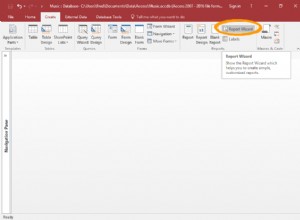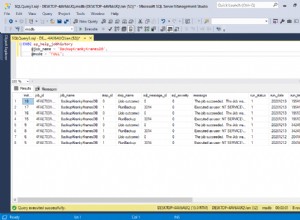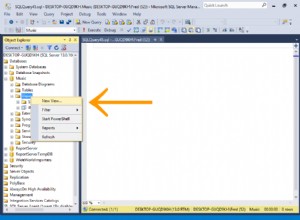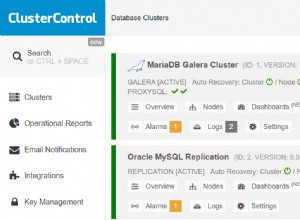Aktualizacja z 5 grudnia 2011
Dzięki Bradowi Robertsonowi i jego zespołowi istnieje klejnot mieszkaniowy . Jest bardzo przydatny i wykonuje wiele ciężkich zadań.
Jeśli jednak będziesz majstrować przy schematach, zdecydowanie sugeruję, aby wiedzieć, jak to właściwie działa. Zapoznaj się z instrukcją Jeroda Santo , dzięki czemu będziesz wiedział, co mniej lub bardziej robi klejnot mieszkania.
Aktualizacja 20 sierpnia 2011 r. 11:23 GMT+8
Ktoś utworzył post na blogu i przechodzi przez cały ten proces całkiem dobrze.
Aktualizacja 11 maja 2010 11:26 GMT+8
Od ostatniej nocy udało mi się uruchomić metodę, która tworzy nowy schemat i ładuje do niego schema.rb. Nie jestem pewien, czy to, co robię, jest poprawne (jak dotąd wydaje się, że działa dobrze), ale jest to przynajmniej o krok bliżej. Jeśli istnieje lepszy sposób, daj mi znać.
Moduł
module SchemaUtils
def self.add_schema_to_path(schema)
conn = ActiveRecord::Base.connection
conn.execute "SET search_path TO #{schema}, #{conn.schema_search_path}"
end
def self.reset_search_path
conn = ActiveRecord::Base.connection
conn.execute "SET search_path TO #{conn.schema_search_path}"
end
def self.create_and_migrate_schema(schema_name)
conn = ActiveRecord::Base.connection
schemas = conn.select_values("select * from pg_namespace where nspname != 'information_schema' AND nspname NOT LIKE 'pg%'")
if schemas.include?(schema_name)
tables = conn.tables
Rails.logger.info "#{schema_name} exists already with these tables #{tables.inspect}"
else
Rails.logger.info "About to create #{schema_name}"
conn.execute "create schema #{schema_name}"
end
# Save the old search path so we can set it back at the end of this method
old_search_path = conn.schema_search_path
# Tried to set the search path like in the methods above (from Guy Naor)
# [METHOD 1]: conn.execute "SET search_path TO #{schema_name}"
# But the connection itself seems to remember the old search path.
# When Rails executes a schema it first asks if the table it will load in already exists and if :force => true.
# If both true, it will drop the table and then load it.
# The problem is that in the METHOD 1 way of setting things, ActiveRecord::Base.connection.schema_search_path still returns $user,public.
# That means that when Rails tries to load the schema, and asks if the tables exist, it searches for these tables in the public schema.
# See line 655 in Rails 2.3.5 activerecord/lib/active_record/connection_adapters/postgresql_adapter.rb
# That's why I kept running into this error of the table existing when it didn't (in the newly created schema).
# If used this way [METHOD 2], it works. ActiveRecord::Base.connection.schema_search_path returns the string we pass it.
conn.schema_search_path = schema_name
# Directly from databases.rake.
# In Rails 2.3.5 databases.rake can be found in railties/lib/tasks/databases.rake
file = "#{Rails.root}/db/schema.rb"
if File.exists?(file)
Rails.logger.info "About to load the schema #{file}"
load(file)
else
abort %{#{file} doesn't exist yet. It's possible that you just ran a migration!}
end
Rails.logger.info "About to set search path back to #{old_search_path}."
conn.schema_search_path = old_search_path
end
end




